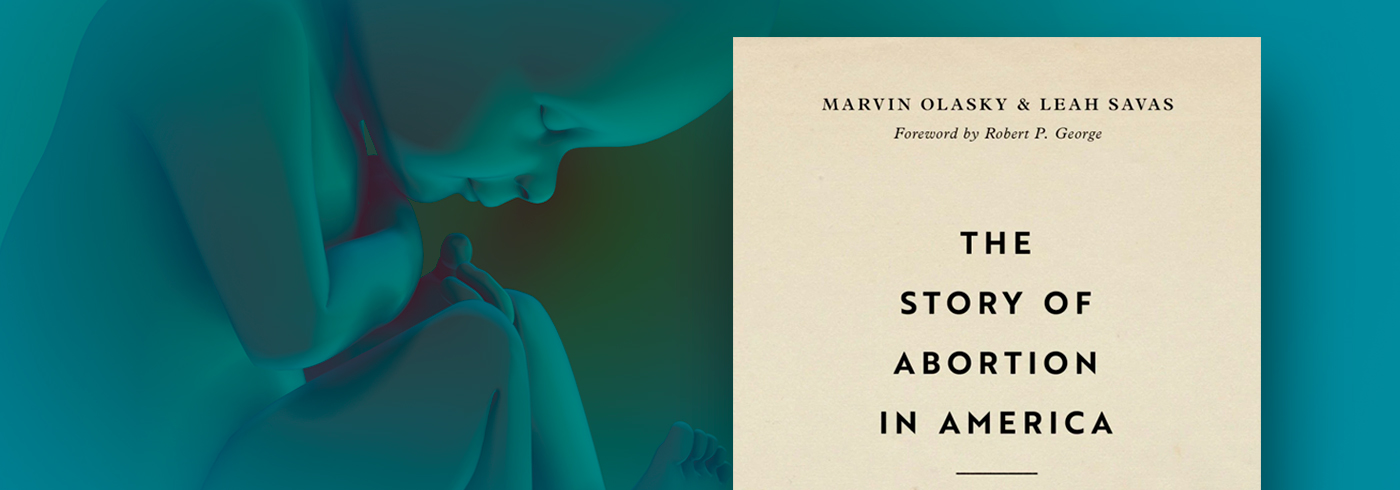Abortion at Street Level
Review of ‘The Story of Abortion in America’
On January 22, 1973, the U.S. Supreme Court handed down its decision in Roe v. Wade. The court declared that the Constitution confers a right to abortion through the Due Process Clause of the Fourteenth Amendment. That decision governed American abortion law at the federal and state levels for nearly 50 years.
And then it didn’t.
On June 24, 2022, the U.S. Supreme Court handed down its decision in Dobbs v. Jackson Women’s Health Center. “Roe was egregiously wrong from the start,” declared Associate Justice Samuel Alito in the majority opinion. “Its reasoning was exceptionally weak, and the decision has had damaging consequences. And far from bringing about a national settlement of the abortion issue, Roe and [Planned Parenthood v.] Caseyhave enflamed debate and deepened division.”
Both Roe and Dobbs appealed to history to buttress their arguments. But those decisions’ historical perspectives viewed abortion from “‘suite level,’ as a law journal might,” as Marvin Olasky and Leah Savas put it. The authors’ new book, The Story of Abortion in America, narrates history at “‘street level,’ where human beings make life-or death decisions.” It is engrossing reading.
The story begins in 1652 in Maryland, when Captain William Mitchell forced Susan Warren, his paramour, to ingest a homemade abortifacient. He had promised to marry her, but reneged when she became pregnant. Warren suffered severe side effects from the abortifacient but lived. The couples’ baby died.
Mitchell was charged with murder, though not convicted. The prosecution simply couldn’t prove that the abortifacient had killed the baby. “It was a great Sin to get it,” Warren said of her extramarital pregnancy, “but a greater to make it [go] away.”
Warren’s abortion was not the first in the American colonies, but it was the first to leave good documentation. It illustrates several themes that recur over the following centuries: promises of marriage in exchange for sex; pressure to abort an unwanted pregnancy; the danger of abortion to both mother and child; the difficulty of prosecuting abortionists; and the interplay between religious mores and individual choices.
Understanding the history of abortion in America offers valuable insights about what steps should be taken next.
Olasky and Savas organize their street-level narrative in five sections:
1. From 1652–1842, abortion was “unsafe, illegal, and rare.”
2. From 1838–1878, “specialization begins”; knowledge of prenatal development became more detailed, but abortion businesses and pro-abortion ideologies became more common.
3. From 1871–1940, abortion opponents addressed the problem of abortion from both “supply side” (via legislation) and “demand side” (via compassion organizations). Meanwhile, abortionists used medical advances such as antiseptic practices to reduce harm to women.
4. From 1930–1995, abortion progressed from “anathema” to “triumph,” with inadvertent help from the missteps of radical pro-life advocates, such as clinic shootings. Doctors began to specialize in abortion, and antibiotics “virtually eliminated maternal danger.”
5. From 1995–2022, the debate over abortion was “still unsettled.” Ultrasound technology showed many the humanity of children in the womb. Activists crafted laws either to reinforce Roe or limit its reach. And everyone wondered whether new appointments to the Supreme Court would uphold or overturn that 1973 decision.
Olasky and Savas illustrate these historical trajectories by telling individual stories. The authors are journalists, so media coverage of newsworthy cases plays a prominent role in their narrative. They highlight abortion providers, ideologues, and politicians, as well as the pro-life doctors, social workers, and legislators who worked against them. They often cite the stories of ordinary women faced with the decision to keep or abort their children.
As already noted, the Dobbs court repudiated Roe, returning America’s four-centuries long debate about abortion to the states. Some states criminalized elective abortion, others expanded the right to abortion, still others adopted mediating legislation. On Roe’s fiftieth anniversary, activists on both sides were plotting their next moves.
In the Epilogue, the authors — who are pro-life Christians — identify a number of historical lessons that like-minded believers should keep in mind in the coming years:
- “Some men with hearts full of passion, jealousy, and hate will pressure women to abort. Some pregnant women will take desperate measures in a case of do or die.”
- “… the need for compassionate help amid crisis pregnancies will remain.”
- “Big media, as in the past, will be crucial, and street-level reporting will have more of an impact than suite-level pontificating.”
- “Even when public opinion concerning abortion was more negative than it is now, enforcement of abortion bans was difficult.”
- “… arresting woman [for seeking an abortion] is a sure way to arrest the progress of pro-life ideas in the twenty-first century.”
- “When abortion pressure grows, the only fundamental thing stronger than that is love.”
- “Laws can reduce the supply of abortionists and affect beliefs about right and wrong. … Child-friendly public policies and corporate practices can also help.”
I recommend The Story of Abortion in America to interested readers, especially pro-life Christians. Americans often conduct suite-level debates about the morality and legality of abortion, which are both necessary and appropriate. But it is on the street, where individual women are faced with unexpected pregnancies, that the abortion debate will be decided case by case. Understanding the history of abortion in America offers valuable insights about what steps should be taken next.
Book Reviewed
Marvin Olasky and Leah Savas, The Story of Abortion in America: A Street-Level History, 1652–2022 (Wheaton, IL: Crossway, 2023).
Influence Magazine & The Healthy Church Network
© 2025 Assemblies of God

